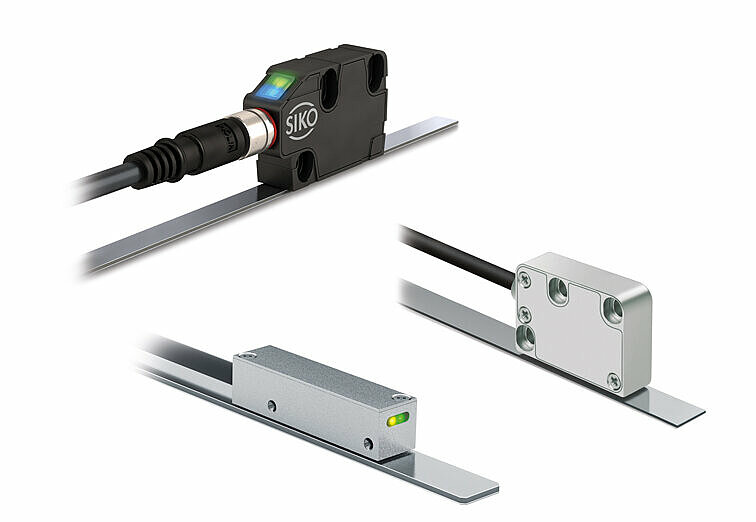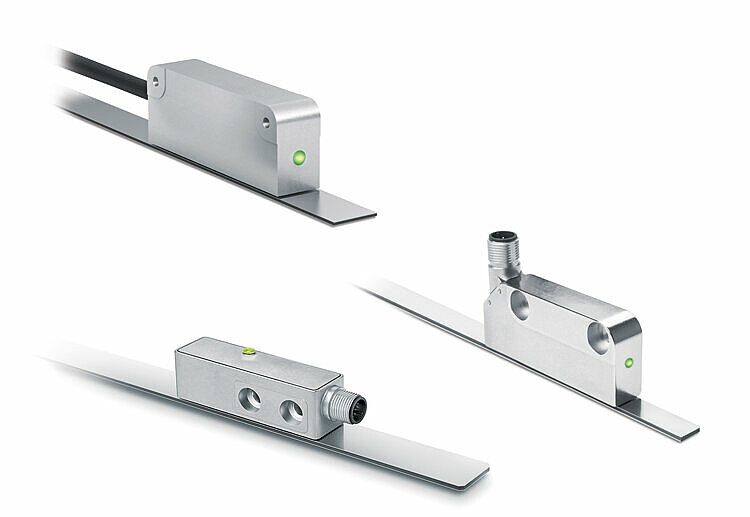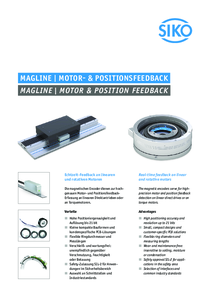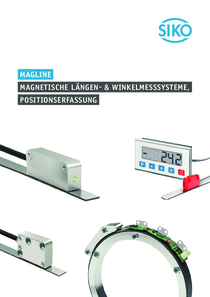Magnetic encoders as a cost-effective alternative to optical sensors
Magnetic encoders are characterized by robustness and cost efficiency. Compared to optical sensors, for example, they are wear-free and insensitive to contamination thanks to their non-contact mode of operation. This means that magnetic encoders require little or no maintenance. They are also more flexible when it comes to installation; the distances between the magnetic encoder and the belt can be significantly greater than with optical measuring systems. The following versions are available:
- Various sizes down to a circuit board solution
- Individual connector designs
- Installation in customer-specific housing
Incremental measurement technology and absolute measurement technology
When choosing a suitable encoder, the first question to be asked is the measuring method: incremental or absolute? Incremental displacement measurement is common and generally speaking more cost-effective: a magnetic tape is coded with regularly arranged north and south poles, and the pole length determines the maximum resolution and system accuracy, among other things. A sensor head, which contains sensor elements, moves over the scale at a defined distance and reads the magnetic fields, which are processed in the form of square-wave signals (counting pulses). Counting the pulses then makes it possible to state the distance traveled.
Magnetic absolute measurement involves a two-track tape, i.e., on one side there is an incremental track, while the other track is encoded absolutely. This coding therefore only occurs once over a certain length of the tape. The advantage of this is that the sensor always knows exactly where it is even when the power is off. In the event of a power failure, however, the incremental method would require a reference run to be carried out to bring the sensor back to a specific reference point, which is then reported back to the control system. To avoid this process step, SIKO provides quasi-absolute encoder solutions. The necessary measurement information is temporarily stored via a battery. This also eliminates the need for referencing in these systems, e.g., after power interruptions. This is essential as a safety precaution in many areas of medical and analysis technology. However, this problem can be completely avoided with true absolute encoder technology.
Active magnetic encoder or passive magnetic encoder?
In addition to the distinction between incremental and absolute magnetic field sensors, it is also important to consider whether the sensor is active or passive. Passive MagLine encoders provide a signal that cannot be used externally and must therefore be connected to subsequent electronics such as a MagLine measuring display or MagLine evaluation electronics. An active SIKO magnetic encoder already converts the recorded signal and has a standardized interface via which it can pass on the information to a higher-level controller, i.e., a customer's subsequent electronics. The MS sensors in the MagLine series have passive properties, while the MSK, MSC and LEC sensors work actively toward the outside.
Magnetic length measurement and magnetic angle measurement in many industries
Magnetic encoders are used in a wide range of industries, especially in environments where contamination and stress can occur for the components used and where absolute accuracy is not very important. Applications include, for example
- Robotics, industrial drive technology, linear drives for dowel drilling stations, parquet production, tubular film packaging
- CT patient beds, mirror tracking (solar power plants), sliding table saws, stone cutting
- Stage technology, forklift trucks, waste and scrap presses, stone cutting
- Wind turbines, elevator technology, pipe bending technology, access controls
You can find out more about SIKO's magnetic encoder technology on the page "MagLine Fundamentals – Advantages and Applications of Magnetic Encoders".





